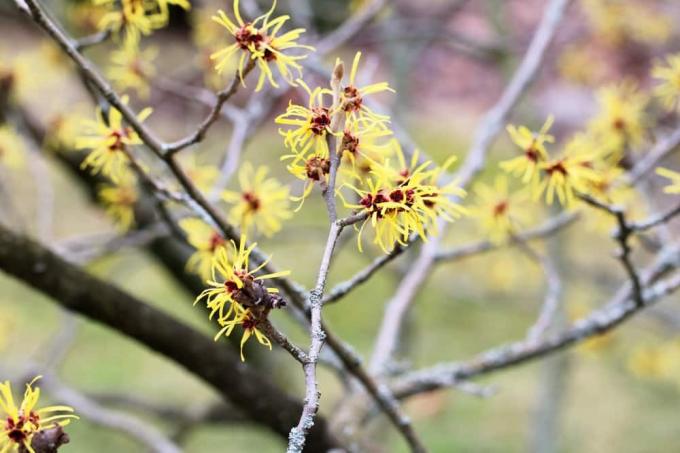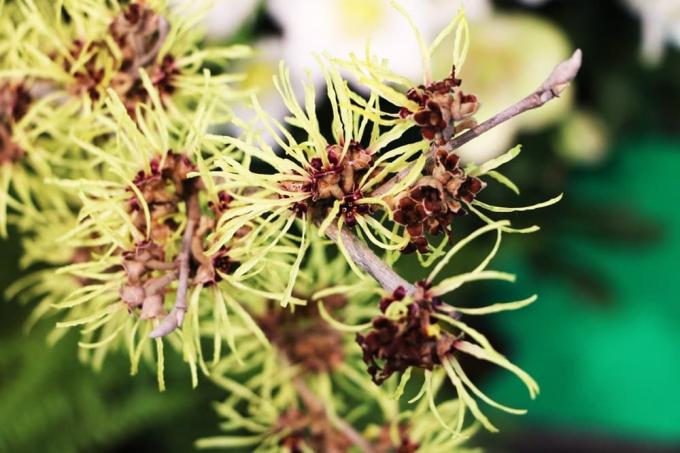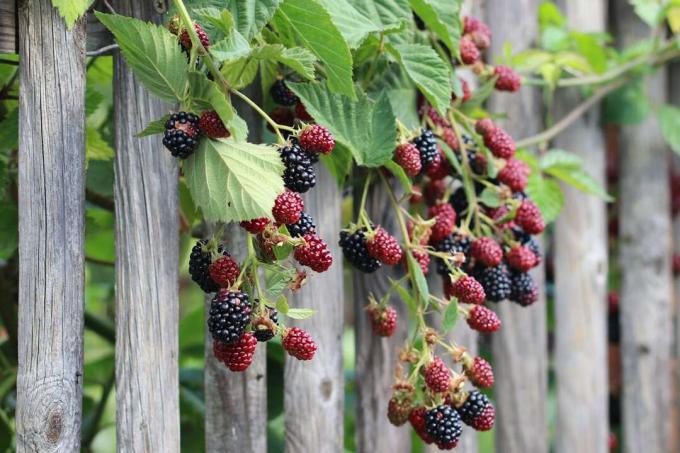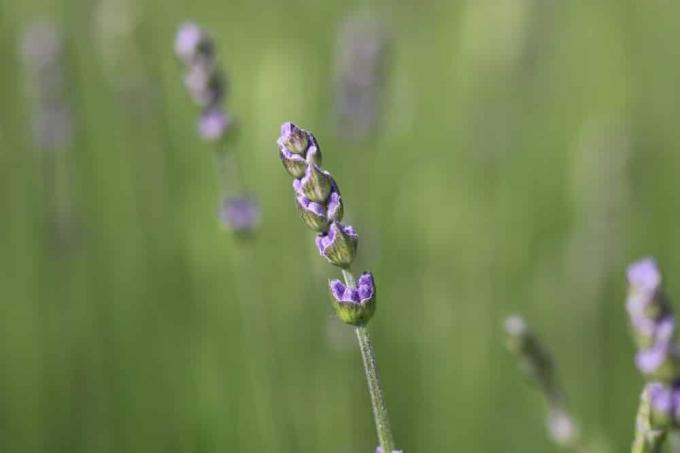

Table of contents
- When is the best time to cut witch hazel?
- When do you have to thin out witch hazel species?
- When does the topiary happen?
- When is pruning done for older plants?
- Regular grooming
- Instructions for thinning out the witch hazel - explained step by step
- The shape cut - a guide in detail
- The taper cut with instructions
- What mistakes to avoid during editing
- Witch hazel blossoms wilted? What now?
The witch hazel or witch hazel is a deciduous shrub that is one of the few winter-flowering plant species and is notable for its unusual flower shape. Since witch hazel needs a long growth period and the shrub can easily be destroyed in its growth form, timing and pruning are very important for the plant.
When is the best time to cut witch hazel?
Compared to other plants, cutting any of the five varieties of witch hazel is not typically done in summer or spring. It is one of the few plants that are in full bloom in winter and, like other trees and shrubs, lose their leaves in autumn. For this reason they are a popular ornamental plant, especially solitary, although they may take a few years to reach their full size of around five meters wide.
It is interesting to note that witch hazel does not require much maintenance to maintain an attractive growth and almost no pruning is required. Above all, no real pruning should be done, as this would damage the shape accordingly. However, the following types of cuts are used to enable the "witch hazel", as it is called in English, to grow healthily:
- Thin out
- topiary
- taper cut
- Regular grooming
When do you have to thin out witch hazel species?
Witch hazel is very hardy and one of those shrubs that almost never needs pruning. The species completely dispenses with a real pruning and therefore only rarely has to be thinned out. Thinning out is particularly important if dead shoots, diseased spots or root suckers can be found on the witch hazel that would disturb the growth of the plant. The best time for thinning is right after flowering, which occurs at a different time depending on the species:
- Hamamelis virginiana: Autumn
- Hamamelis vernalis: Winter
- Hamamelis japonica: Winter
- Hamamelis mollis: Winter
- Hamamelis ovalis: Winter
- Hybrid Witch Hazel: Winter
For this reason, you must pay attention to which species you have in your garden before thinning out. Proper pruning of a Hamamelis species only happens when the right time is chosen. Hamamelis virginiana is also known as Virginia or fall flowering witch hazel. This allows you to prune at the right time without worrying about disturbing the plant while it is flowering. You should thin out the root trunks in autumn. Important: here you only remove the root suckers.
When does the topiary happen?

Due to the very small growth, about 20 centimeters a year, it can take years before a shape cut has to be done. The topiary is not a real topiary, but rather a careful pruning of the existing plant. Because witch hazel can lose shape or grow too large over the years, this pruning is sometimes necessary. The topiary is carried out after flowering, at the same time as the pruning.
When is pruning done for older plants?
As with many other types of shrubs, neglected witch hazel can be prone to overgrowth, affecting the vitality and natural form of the plant. It is very hardy and undemanding in care, but some specimens, especially, require it who have been exposed to strong winds in winter and too little sun in summer taper cut.
This should also happen after flowering and ensures that the witch hazel starts growing again in a species-appropriate manner the following year. However, you must assume that after such a venture, the shrub will need to grow for several years to regain its full size. Therefore, this cut should only be used in an absolute emergency and with a sickly, old plant.
Regular grooming
Proper pruning is only necessary to a limited extent in some years with good growth, but a witch hazel is always happy about enough attention. You can remove dried branches or dead foliage throughout the year to keep the shrub fresh and healthy.
Instructions for thinning out the witch hazel - explained step by step
Since witch hazel is very sensitive to pruning, it is important to cut properly so as not to damage the plant. Follow the steps and you will allow the witch hazel to grow comfortably without being restricted.
- Witch hazel is sensitive to cuts of all kinds, so it needs a sharp, clean tool. Use pruning shears that are suitable for young shoots and clean them before cutting if necessary. Note: especially scissors that have been used to cut other plants need to be cleaned. This is the only way to protect the shrub from a
- Since the branches with the flowers can be easily identified on the witch hazel, you can immediately see which shoots need to be carefully removed. Examine all shoots with flowers carefully, because due to the size of the witch hazel in later years, you must examine them closely in order not to remove shoots that are too old.
- When cutting, you must be extra careful and avoid cuts. Only remove what is necessary to maintain healthy shoots.
- Remove any shoots that are weak or dried up. These would only hinder the growth of the shrub.
- Next, you should look for shoots that are crossing over. Remove the shoot that is behaving against the mold, exposing the other shoot. This will help the witch hazel hold its shape. It also stimulates growth.
- After cutting, you should remove the parts of the plant that have been cut off and cover the shoots with fleece, especially in the case of young specimens. This is only necessary if you live in a very cold climate or the location of the shrub is plagued by strong winds.
- During the annual care, proceed as you would with pruning, only cut off the dried, weak or kinked shoots.
- The root sucker is thoroughly removed with a simple cut.
The shape cut - a guide in detail

While thinning specializes in the care of the individual shoots, topiary is used to reduce the size of the bush or to trim shoots that are too long. You should be particularly careful here so as not to damage the plant.
- Also use sharp pruning shears that have been thoroughly cleaned beforehand.
- The topiary is done on all shoots that have flower buds. Locate this and make the cut there. Please note: This does not mean the leaf buds.
- Cut back the shoot by two buds of last year's growth. Leave as many flower buds as possible.
- When cutting, always pay attention to the shape. If there is a bald spot on one side of the topiary, do not cut there. The shrub would suffer and not recover for years. It is typical of the witch hazel that after a topiary the size was only slightly contained. This is necessary to keep them from wasting away.
- Again, remove the removed green. Winter care is not necessary after the topiary.
The taper cut with instructions
You should only use the instructions for rejuvenation pruning if your witch hazel species is suffering from old age or a lack of care.
- Use pruning shears that are suitable for thicker branches. Again, make sure the scissors are sharp and clean.
- Measure 15 to 25 centimeters from the bottom of the plant. This is the length you will clip the witch hazel to.
- Now shorten the main shoots to the measured length.
- Remove buds, root suckers and sprouts on the main branches that appear below the measured length.
- Then cut back all other shoots to two buds.
- Then remove all plant matter and let the plant rest.
What mistakes to avoid during editing

Cutting witch hazel properly means not cutting too much. With every cut and regular care, always make sure to remove as little of the shoots as possible. With just one too many cuts, the witch hazel could wither away and then need to be subjected to a rejuvenation cut. Take your time cutting to get the best results.
There are signs throughout the year if the shrub has been over trimmed or injured during pruning. If the following signs appear, a rejuvenation pruning may be necessary, delaying the overall growth of the plant by years:
- Dormant buds (preventive buds) occur more frequently
- No longer sprouts from old wood
- Drives out slowly
These signs are always unfavorable for witch hazel and result in poor growth, even to the point of stunted growth. So pay more attention to these points.
It is also important to really only prune the youngest shoots when cutting. Never cut into the thick branches, which are full of sap and are among the oldest parts of the plant. Cuts are not well tolerated by witch hazel and can lead to a variety of problems, most notably the regular loss of shoots and flowers. Don't be afraid if the flowering doesn't come in winter or autumn.
Witch hazel will not bloom if the summer has been too dry and there has been little rainwater. In this case, the cut is not to blame. Just wait until next year and hope for enough summer rain.
Witch hazel blossoms wilted? What now?
After flowering, the individual flowers say goodbye very quickly and are disposed of by thinning out. If flowers wither during the flowering period, they should not be removed until they have thinned out. Just leave this on the witch hazel until the cut occurs. You could accidentally damage the shoots and permanently ruin the growth.
 Home editorial office
Home editorial office
Learn more about pruning

Eucalyptus dried up: cut back now?
When a eucalyptus dries up, some owners immediately think of cutting it back. Because they want to see fresh green bud quickly. The chances of that happening may be good. But one thing must not be left out: research into the causes! Otherwise a new cycle of drying up and cutting begins.

Cut blackberries: Instructions for the right cut
Bramble branches only bear fruit for one summer, after which they are used up and die off in winter. It's a good thing that new canes grow back in time for the following year. Cutting care means: What no longer supports should be removed, young rods must be optimally trained.

cutting snowball | 13 tips for pruning
When it comes to snowballs (Viburnum), the opinions of numerous hobby gardeners differ when it comes to cutting. Main reason against pruning: Destruction of the natural appearance by pruning. Find out now when it is unavoidable and which tips should be heeded.

Cutting sage: 6 tips for cutting back
Cutting measures and their ideal time depend on the species of sage plants, because they have differentiated ways of life. There are woody and herbaceous representatives that require different attention. In order to carry out the measures, a basic set of tools is helpful.

Pruning hydrangeas: when is the right time?
Hydrangeas are a real beauty because of their flowers. In the long term, however, the flowering power is only maintained if regular pruning takes place. Because cutting off withered or dried plant parts offers protection. The following guide shows when this measure should be taken.

Cutting Lavender | When is the best time?
Lavender is a popular perennial, but difficult to cut. Without regular pruning, the shrub becomes lignified and less robust. Choosing the right time is important for pruning. When to cut depends on the use of the perennials.



